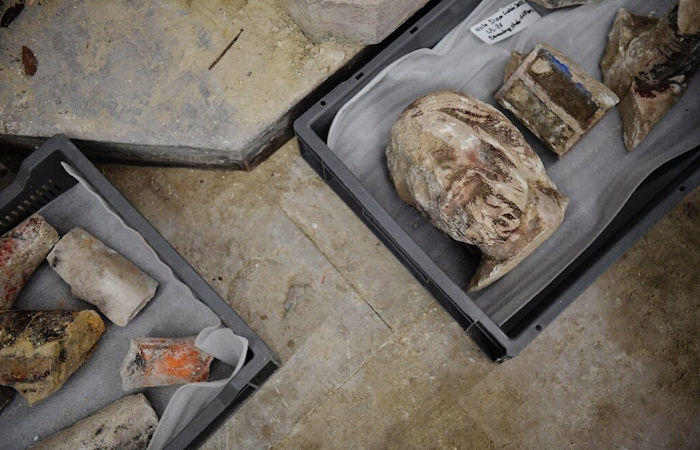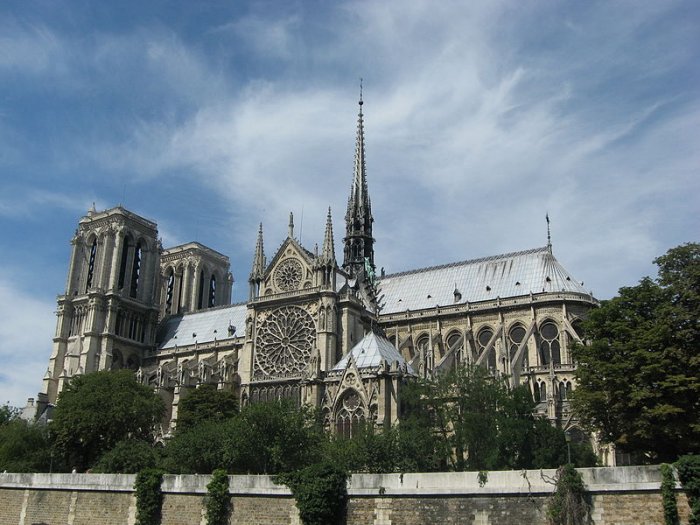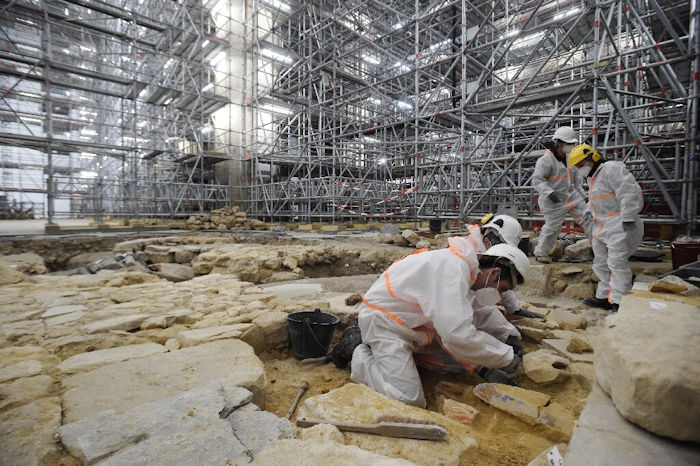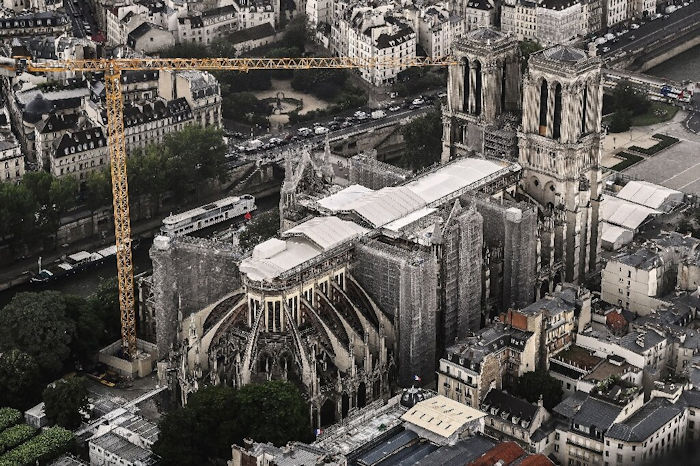Jan Bartek – AncientPages.com – A surprising discovery of an ancient sarcophagus and several tombs at Notre Dame Cathedral in Paris, France has been described as a great finding of historical value.
The French Ministry of Culture said that during the preparatory work to rebuild the spire of the temple, several tombs and a “completely preserved” lead sarcophagus in the shape of a human figure were discovered.

The bust of a bearded man has also been excavated, part of an ancient screen. Credit: AFP
Notre-Dame has stood tall above Paris since the 1200s and it’s one of the most historic landmarks in the capital of France. It is also one of the most popular tourist attractions in the world. The cathedral is considered to be one of the finest examples of French Gothic architecture.
After the fire in 2019 many worried, the historical building could not be saved but the cathedral has been rebuilt and preserved.
The burial sites “of remarkable scientific quality” were unearthed during preparatory work for rebuilding the ancient church’s spire at the central spot where the transept crosses the nave, the culture ministry announced late Monday.
According to Rzeczpospolita, the lead coffin could have been made for the “senior dignitary” and probably dates back to the 13th century – one century after the cathedral was built. Scientists judged the find to be of “tremendous scientific importance”.
“Archaeologists were delicately cleaning and excavating the sculptures emerging from the ground, including a pair of carved hands.
The bust of a bearded man and some sculpted vegetables, with traces of paint still visible, had been removed.
The team has already used a mini endoscopic camera to peek inside the sarcophagus, which appeared to be warped by the weight of the earth and stones,” the ᴀssociated Press reports.
“You can glimpse pieces of fabric, hair and above all a pillow of leaves on top of the head, a well-known phenomenon when religious leaders were buried,” said Christophe Besnier, the lead archaeologist.

Beautiful Notre Dame before the fire. Credit: Wikipedia, CC BY-SA 3.0
“The fact that these plant elements are still inside means the body is in a very good state of conservation,” he added.
In addition to the tombs, elements of painted sculptures were found just below the present floor of the cathedral, identified as parts of the original 13th-century rood screen – an architectural element separating the altar area from the nave.
Other parts of the structure, destroyed in the early 18th century, were discovered during the restoration of Notre Dame in the mid-19th century and are already on display at the Louvre.

Archaeologists are racing to finish their work before reconstruction resumes at the end of the month. Credit: AFP
French scientists carried out the last archaeological excavations before erecting the scaffolding to support the rebuilding of the spire.

Notre Dame was struck by a devastating fire in 2019. Credit: AFP
This discovery will help improve scientists understanding of funeral practices in the Middle Ages, added Dominique Garcia of the National Insтιтute of Archaeological Research.
However, as the ᴀssociated Press reports, “despite the excitement of the find, the clock is ticking for the archaeologists.
They have been given until March 25 to finish their work before the reconstruction project resumes—in order to keep to a planned reopening of the cathedral in 2024.”
Written by Jan Bartek – AncientPages.com Staff Writer





